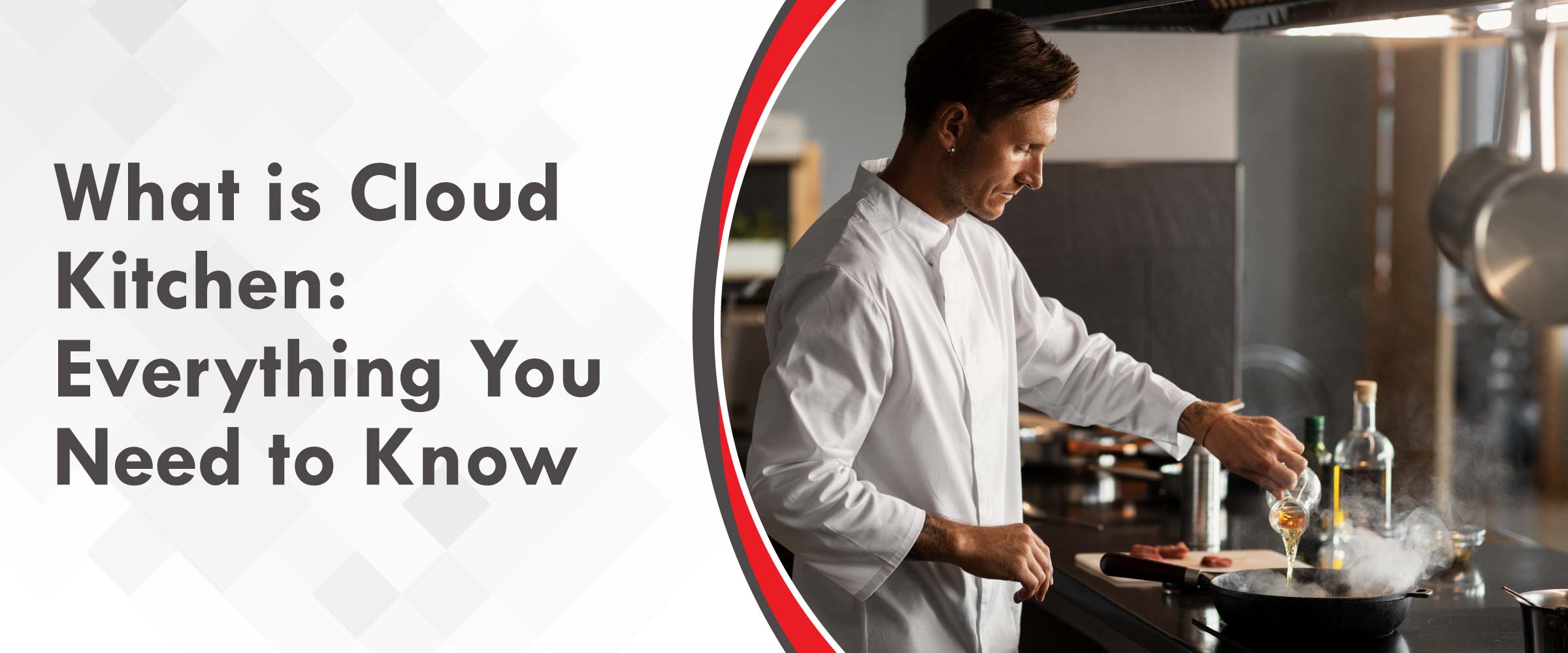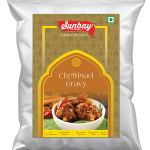
What Is a Cloud Kitchen and How To Start and Operate One?
Have you ever thought about opening a vibrant restaurant or maybe a cosy cafe? Like many others, you too may have been discouraged after finding out the enormous amount of investment one needs to make. What if we told you there was a way to realise this dream of yours at a fraction of the cost?
Cloud kitchens have gained massive popularity in recent years due to the boom in food delivery apps. While you may not get to see your patrons dining in front of your eyes, it is a highly profitable business model. If this sounds intriguing, read this blog till the end. In this blog, we will explain what a cloud kitchen is and how to set one up, along with its benefits.
A] What is a Cloud Kitchen Business?
A cloud kitchen, also known as a virtual or ghost kitchen, is a type of commercial kitchen which only focuses on the cooking part. Cloud kitchens do not have an area where customers can sit and dine. The cloud kitchen business model operates solely for take-out and online food delivery apps.
Cloud kitchens can either be shared between multiple restaurants or operate under a single brand name. For example, if you operate a cloud kitchen, different restaurants can outsource their food preparation to you, or you can run your cloud kitchen under your brand name.
B] How To Start a Cloud Kitchen?
1. Obtain All Necessary Permits

Similar to traditional restaurants, cloud kitchens also need to obtain permits and licences to operate. Cloud kitchens must comply with the health and safety regulations that apply to traditional restaurants, cafes, and hotels. Other licences and permits include GST registration, a Shop & Establishment Act licence, and a Fire Department NOC.
2. Comply With Health and Safety Regulations

Cloud kitchens usually operate in a limited space; hence, complying with health and safety regulations is necessary for a safe and hygienic work environment. Make sure the space you are leasing complies with health and safety regulations. Adhere to the Food Safety and Standards Authority of India’s (FSSAI) regulations.
3. Calculate Setup and Operating Cost

Once you have the right place, you need to consider the setup and operation costs. While the cost may be lower than setting up a traditional restaurant, it is still a significant cost. Your setup cost includes equipment, licenses, and a rent deposit. While operating costs include rent, staff salaries, marketing, inventory, and packaging.
4. Plan the Menu

Next, you need to decide what cuisines and dishes you want to offer on your menu. Consider your target audience, customer demand, competition, and availability while planning your menu. FSIPL is a veteran in this field and offers tailored menu curation and menu engineering services.
5. Register With Delivery Partners

Once you meet all the compliances and have the necessary licences and permits, you become eligible to register with delivery partners. You need to partner with platforms like Zomato, Swiggy, and Uber Eats to promote your services and reach customers.
6. Managing Supply Chain and Vendors

To run your kitchen smoothly, you need to manage a supply chain and partner with multiple vendors. FSIPL is one of the most reputed and experienced food product distributors in India. By partnering with us, you ensure smooth inventory management.
C] What Are The Benefits of Operating a Cloud Kitchen Instead of Traditional Restaurants
- Lower financial investment: Starting a cloud kitchen requires much less initial capital than a restaurant. The place you rent is far smaller; hence, the rent is less. Additionally, there are fewer permits to gather.
- Increased ROI: Cloud kitchens often host multiple restaurants that share kitchen equipment and inventory. This resource-sharing model reduces overhead costs and improves ROI. These also enable delivery apps to give out massive discounts as compared to sit-down restaurants.
- Wider Market Reach: As cloud kitchens do not have a set location where people come to dine, you can practically serve multiple neighbourhoods and even cities at once. You can set up your kitchen in a rent-friendly location and deliver to premium locations.
- Lower Barrier To Entry: Cloud kitchens need minimal investments to start, and the space needed is also smaller. Hence, it is an easy entry point for aspiring chefs and entrepreneurs.
- Rapid Scaling: Once your product gets traction, cloud kitchens can be scaled rapidly to meet the demand. You do not need to expand your space or make renovations like traditional kitchens. Just increase the volume of cooking, and you are good to go.
Further Reading:
D] How To Optimise Cloud Kitchen Operations?
- Offer Beverages for Maximising Profit: Beverages are amongst the most profitable items on a menu and are very easy to make. You can use Marimbula’s syrups and fruit crushes to create intricate and exotic cocktails and mocktails with consistent taste.
- Pre-made gravy bases reduce cook times: If you serve Indian dishes, you must know that making Indian gravies from scratch can take a lot of time and effort. Using pre-made Indian gravy bases can drastically reduce the cook time.
- Use canned foods to reduce prep time: Canned foods are usually ready to cook with. Meaning, there is no dicing, chopping, or prepping involved. They can improve your efficiency when dealing with large orders.
- Use broth powders for convenience: Broths can enhance the taste of any dish, but take a lot of time and labour to prepare. Broth powders, on the other hand, give the same taste and are ready to cook.
- High-quality marinades maintain the texture: Cloud kitchens do not get the luxury of serving food right after it is cooked. If you want to ensure the texture of the food remains consistent during the delivery, use high-quality marinades and coatings.
- High-quality spices and seasonings improve taste: Using high-quality spices and seasonings is essential for making flavourful dishes. If you want your business to have a good reputation and scale, this is non-negotiable.
Transform your cloud kitchen into a culinary brand with our tailored HORECA solutions—shop now with Food Services India Pvt. Ltd.!
Conclusion
If you want to enter the HoReCa industry, starting a cloud restaurant is one of the most economical and easiest ways to do so. It requires less financial investment and offers better ROI and scalability than traditional means. To start a cloud kitchen, first, obtain the necessary permits and licenses, comply with the local and FSSAI regulations, and calculate the initial investment and operating costs.
If you are planning to start a cloud kitchen of your own, partner with FSIPL today. We are an experienced and renowned HoReCa product manufacturer in India, having helped numerous restaurants and ghost kitchens establish themselves.










